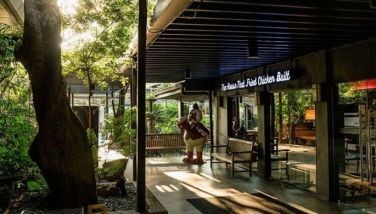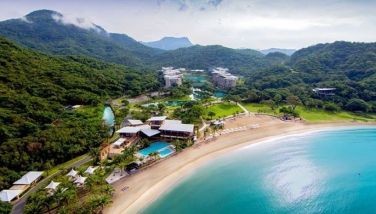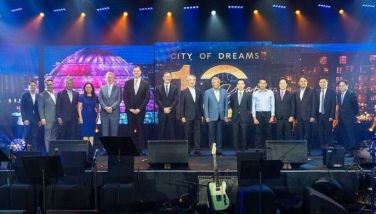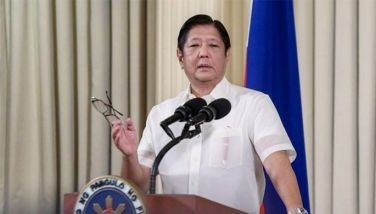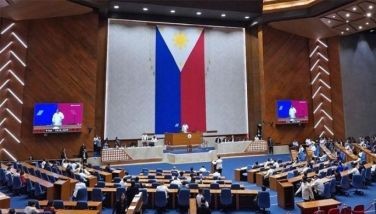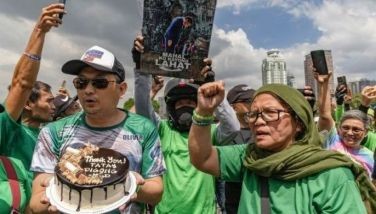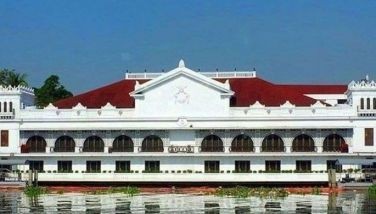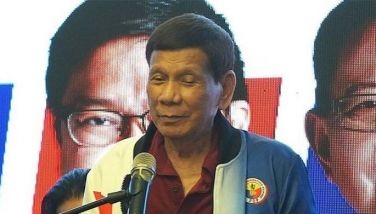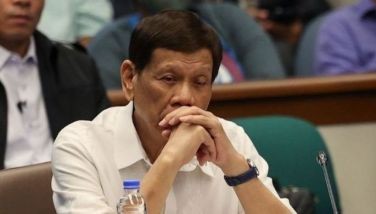US affirms ‘ironclad’ commitment to MDT

Stronger deterrence needed vs China threat – Hegseth
MANILA, Philippines — US Defense Secretary Pete Hegseth reaffirmed yesterday Washington’s “ironclad” commitment to the Mutual Defense Treaty (MDT) with Manila, stressing that deterrence is necessary in the Indo-Pacific region amid “threats from the communist Chinese.”
Hegseth is the first high-ranking official of the Trump administration to visit the Philippines. His visit comes amid Beijing’s increasingly aggressive actions in the West Philippine Sea.
During his meeting with President Marcos at Malacañang, Hegseth stressed that “peace through strength is a very real thing.”
“Deterrence is necessary around the world, but specifically in this region, in your country, considering the threats from the communist Chinese, and that friends need to stand shoulder-to-shoulder to deter conflict, to ensure that there’s free navigation,” he said.
“Whether you call it the South China Sea or the West Philippine Sea, we recognize that your country has (stood) very firm in that location and in defense of your nation,” Hegseth said.
He also relayed to Marcos US President Donald Trump’s commitment to the two countries’ defense alliance and economic partnership.
“I had a chance to speak just a few minutes ago to our president, President Trump, who sends his regards to you as well, thinks very fondly of this great country, is very committed to the alliance that we have, to the friendship that we have, the cooperation that we have,” the US defense chief said.
“He (Trump) and I both want to express the ironclad commitment we have to the Mutual Defense Treaty (MDT) and to the partnership, economically, militarily, which our staffs have worked on diligently for weeks and weeks and months,” he said.
Signed on Aug. 30, 1951, the MDT states that each country would come to the defense of the other in case of an attack by a foreign nation.
Marcos and Hegseth emphasized the two countries’ shared commitment to peace in the Indo-Pacific region.
In his remarks, Marcos thanked the US official for making the Philippines the first stop of his trip to Asia. Hegseth is also visiting Japan.
“Your visit to the region, and especially the fact that you have come to the Philippines as your first stop, is a very strong indication and sends a very strong message of the commitment of both our countries to continue to work together, to maintain the peace in the Indo-Pacific Region within the South China Sea,” Marcos told Hegseth.
Hegseth also met with Defense Secretary Gilbert Teodoro yesterday.
Marcos told Hegseth the US is not only the Philippines’ only treaty partner but also continues to be its “supporter for peace in this part of the world.”
“And we have always taken, we have always understood the principle that the greatest force for peace in this part of the world would be the United States,” Marcos said.
After Hegseth, US Secretary of State Marco Rubio is planning to visit the Philippines next month, Philippine Ambassador to the US Jose Manuel Romualdez earlier said.
There is no exact date for Rubio’s visit as of yet but “probably by April,” Romualdez said.
He noted that after these high-level visits, the two governments would already likely be able to firm up the “exact timing” of Marcos’ visit to Washington.
Meanwhile, Speaker Martin Romualdez joined yesterday the country in welcoming Hegseth on his first visit to the Philippines.
“His presence reaffirms the deep, historic and forward-looking alliance that has long bound our two nations in friendship and shared purpose,” the Speaker said.
He noted that Hegseth’s visit “comes at a critical time for the region and underscores our common commitment to upholding peace, stability and the rule of law – especially amid complex challenges in the South China Sea.”
For his part, House deputy majority leader and La Union Rep. Paolo Ortega V described Hegseth’s visit as a strong affirmation of the enduring partnership between the two nations amid regional security challenges.
He emphasized the value of close collaboration between Manila and Washington in addressing emerging security threats and safeguarding national sovereignty, especially at a time of heightened tensions in the Indo-Pacific region, including the South China Sea.
The US Department of Defense said Manila is part of Hegseth’s first trip to Asia, which will also take him to Japan, Guam and Hawaii. It said the US defense chief is visiting the country “to advance security objectives with Philippine leaders and meet with US and Philippine forces.”
Hegseth’s visit included high-level discussions with Philippine officials focusing on enhancing defense cooperation and reinforcing maritime deterrence strategies.
The US secretary’s agenda is set to specifically cover improved joint maritime patrols and increased interoperability between Filipino and American armed forces, both vital steps toward countering persistent incursions in Philippine waters.
Bayan hits visit
Hegseth’s official visit yesterday could lead to intensified meddling of the US government in the Philippines’ affairs, militant group Bagong Alyansang Makabayan said yesterday.
Bayan secretary general Raymond Palatino warned that Hegseth’s visit will also result in the establishment of more US bases in the country.
Bayan and other activist groups held a rally in Manila to protest the visit.
Hegseth has no other aim than to impose the US’s imperialist agenda under President Trump, Palatino said, noting that the US Defense secretary could not name a single Southeast Asian nation during his confirmation hearing in January.
“Like his predecessors, Hegseth sees the Philippines as a territory which can be used to expand US military forces and assert US geopolitical influence in the region,” Palatino said.
The US, Palatino stressed, is exploiting the Philippines’ territorial dispute with China. Through Hegseth, Palatino said the Trump administration could demand access to more bases and other outposts, which will further escalate tension in the region. — Jose Rodel Clapano, Emmanuel Tupas
- Latest
- Trending











